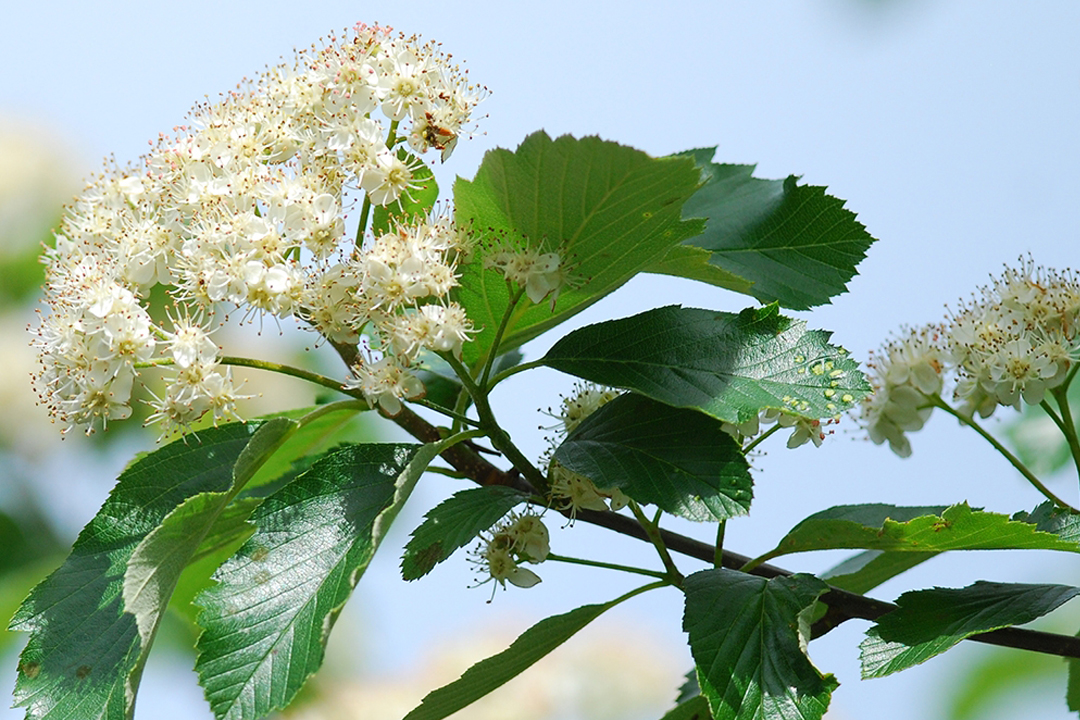
Bristol whitebeam
Scientific name: Sorbus bristoliensis
Status: Nationally rare. IUCN – Vulnerable.
Flowering time: Creamy white flowers in May and early June. Orangey-red berries from September – October.
Description: This tree grows to 15-22 metres tall. Its leaves are characteristically kite-shaped at the base, with lobes shaped like steps/stairs going to a point at the tip. Greenish-white on the undersides. Creamy-white flowers with pink anthers, producing orangey-red berries in the autumn.
Social history: First discovered in Leigh Woods by botanist Martha Atwood in 1852.
Taxonomy: Member of the Rosaceae (or rose) family. Originated as a hybrid between Sorbus torminalis (wild service-tree) and Sorbus eminens (round-leaved whitebeam).
Global and national distribution: : Endemic to the Avon Gorge – it grows wild here and nowhere else in the world. The Avon Gorge is particularly famous for its whitebeams. Including the Bristol whitebeam there are seven kinds of whitebeam endemic to the Avon Gorge. The others are Wilmott’s, Robertson’s, Houston’s, Observatory, Leigh Woods and Avon whitebeams.
Threats: Shading out by faster growing and larger tree species. Requires open well-lit areas for seed germination to develop a stable population.
Photographs: © Denice Stout.

